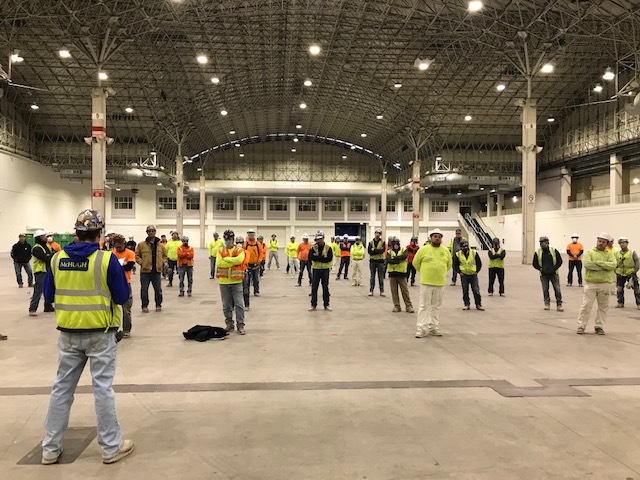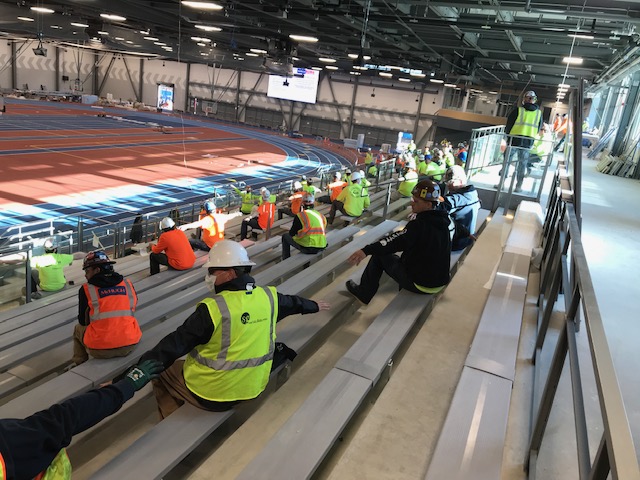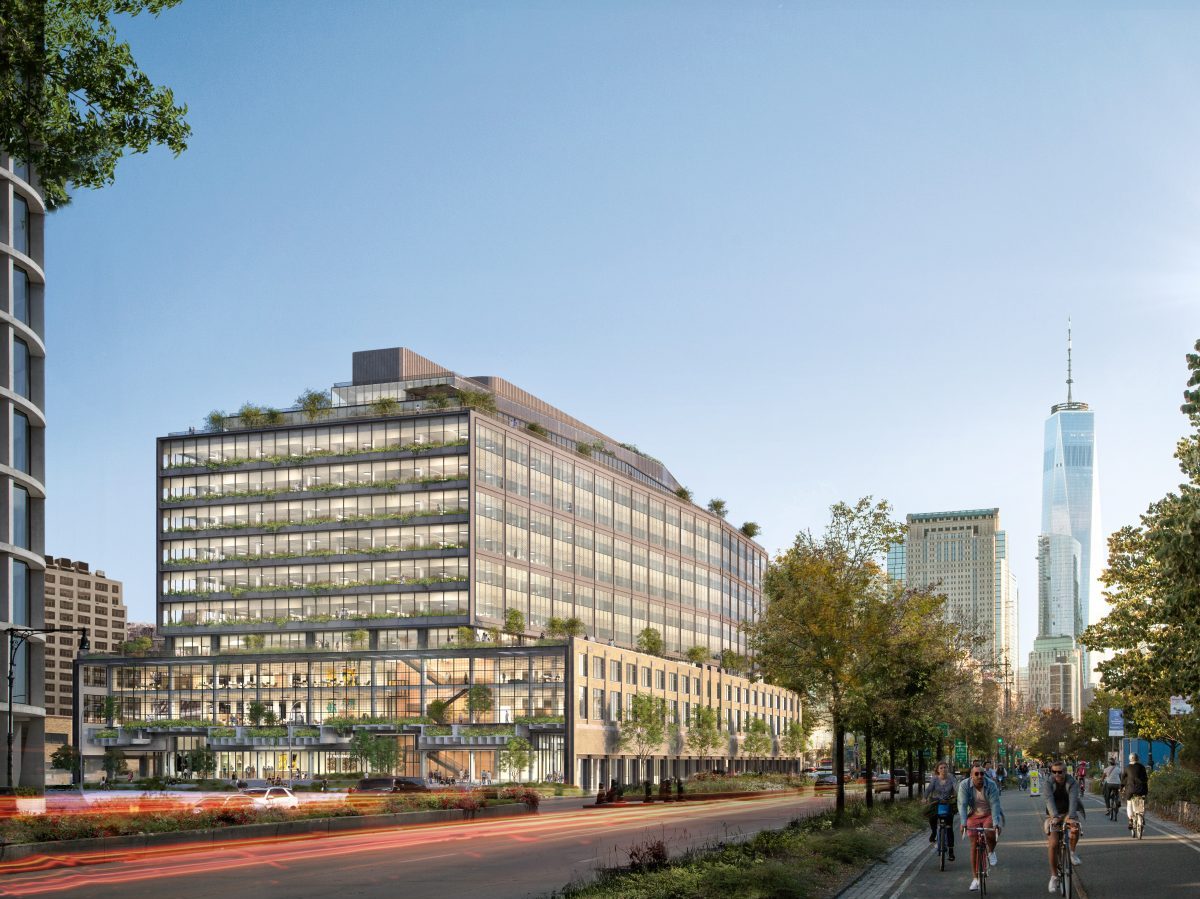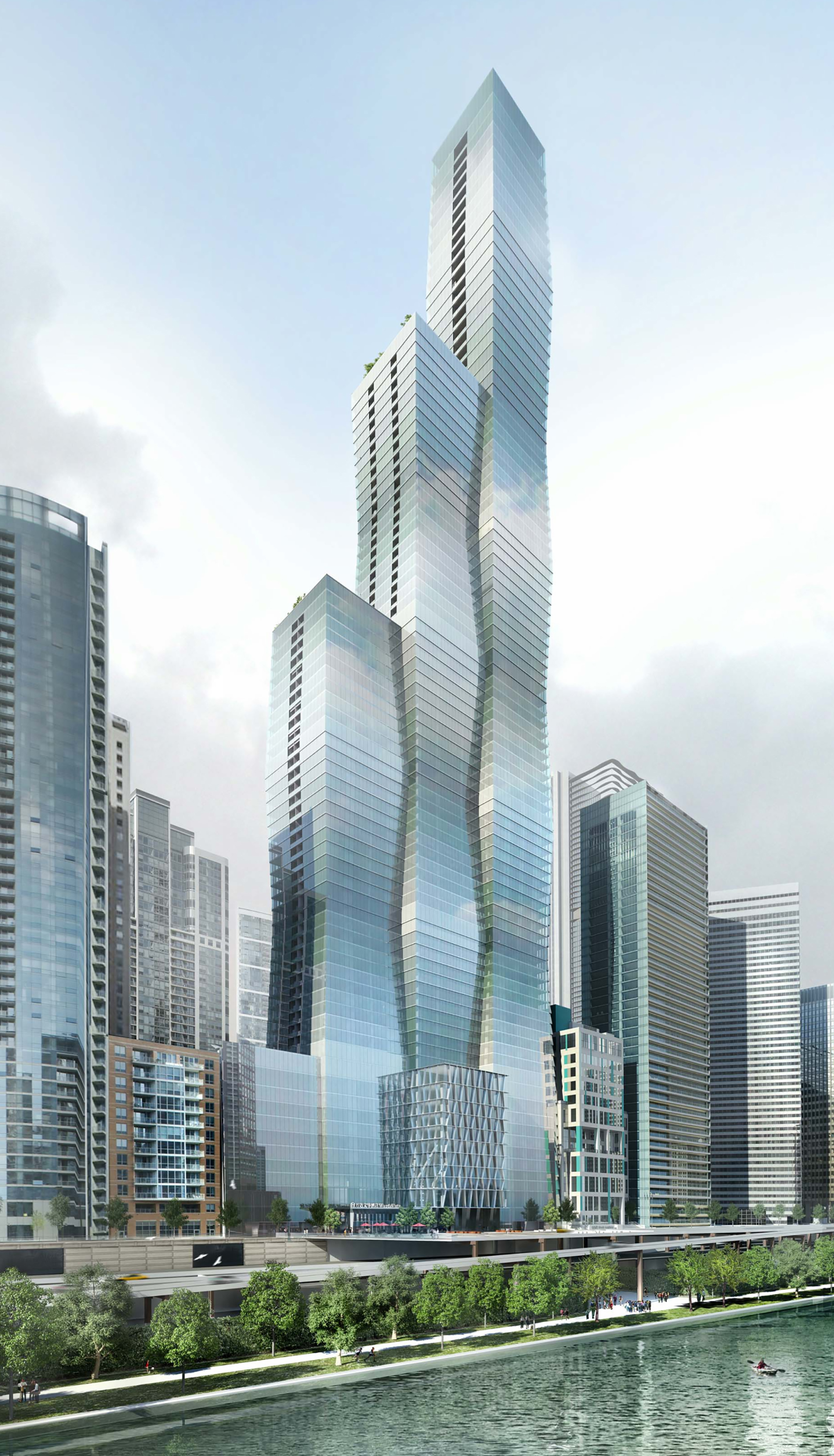Some US Megaprojects Power Through in the New Normal
Multibillion-dollar developments across the country are adapting to challenges brought by the health crisis.

James McHugh Construction workers during a safety meeting at the Curio Hotel project on Chicago’s Navy Pier. Image courtesy of James McHugh Construction
Development was in for a bumpy ride going into this year’s second quarter, with local regulations, disrupted supply chains and workforce availability delaying progress on both existing and planned developments. Even so, some of the country’s largest commercial projects are powering through.
Oxford Properties Group’s U.S. development head Dean Shapiro told Commercial Property Executive that St. John’s Terminal, which the company is redeveloping alongside the Canada Pension Plan Investment Board, just secured a nearly $1 billion construction loan in a Wells Fargo-led deal, and is being kept “as close to the schedule as possible” despite unavoidable disruptions, including supply chain issues.
READ ALSO: An Industrial Developer’s Insights on the Pandemic’s Impact
Shapiro said that the nearly 1.3 million-square-foot reimagined High Line freight terminal, slated to be occupied by Google, is “emblematic” of the future of work and more suited to Millennial tastes than a conventional office building. The health and wellness aspect of the project includes its location across from the Hudson River Park, an acre and a half of open space, and the ability to bring in fresh air make the redevelopment particularly well-suited to a post-COVID-19 world.
While Oxford has already implemented measures to ensure worker safety, Shapiro expects that strict guidelines on how work is conducted on construction sites will be issued by the city and state very soon.
Meantime, he said Oxford and Google are “constantly evaluating building systems and technology,” from touchless technology to air filtration. Despite the countless technologies surfacing in response to the pandemic, Shapiro advises megadevelopers to look more holistically at wellness and hygiene and then incorporate long-term desirable attributes into their projects.
READ ALSO: Sidewalk Labs Abandons Toronto Waterfront Megaproject
In Chicago, the 98-story, $1 billion Jeanne Gang-designed Vista Tower in Lakeshore East, a master-planned, mixed-use urban project being developed by Magellan Development Group in the Loop neighborhood, is another project that hasn’t missed too many beats as a result of the pandemic. Michael Meagher, president of general contractor James McHugh Construction, said that Vista Tower currently has 330 construction workers on-site erecting the supertall structure, which will be the third-tallest in the city upon completion.
Meagher pinpoints March 13, 2020 as the date the industry became “gravely concerned.” It was then, in his role as president of Chicagoland Associated General Contractors, that he began reaching out to colleagues to figure out how to continue construction “in a new way” given the fact that the industry would remain open as an essential business.
For example, Vista Tower has five elevators distributing trade subcontractors to the floors. Given new CDC guidelines, the elevators went from carrying 15 to 20 people to two or three. Also, McHugh developed a very complex “bus stop,” staggering shifts to where some workers started earlier lessening demand on the lifts. “It worked out like wizardry” telling which subcontractors had to be at which elevators at what time, Meagher noted.
Development shifting gears
Surveys by AGC of America show a steady increase since mid-March in the number of projects that have been halted, either by government orders or by project owners, and in cancellations of upcoming projects, according to AGC of America chief economist Ken Simonson. “These trends are likely to prevail through the rest of 2020 and possibly into 2021,” he said.

James McHugh Construction workers during a safety meeting at the Gately Park Indoor Track and Field facility project in Chicago’s Pullman neighborhood. Image courtesy of James McHugh Construction
Simonson also pointed to Procore data revealing that “construction firms with revenue exceeding $200 million—the sort most likely to work on multi-use or megaprojects—had a slightly smaller decrease in hours than small firms, $20 million or under.”
Robert Barone, CBRE senior managing director of valuation and advisory services, said that his company is working on a number of large projects of more than $1 billion in New York City and Las Vegas, as well as others in the $750 million range. “Some have been shut down, while others have stayed open with the typical COVID-19 protocols,” he explained.
Meanwhile, anything of scale that is speculative or was not fully capitalized and ready to break ground before the pandemic will incur some delay, according to Transwestern Development Co. President Carleton Riser. “(We have) speculative industrial projects and multifamily projects in various markets that we expect to proceed to groundbreaking in the third quarter based on previous plans and commitments.”
Here to stay
Dean Schwanke, vice president of multifamily for the National Association of Home Builders, predicts that, in the short run, “There’s a lot of thought being given to what ‘Do I really want to be in a high-rise office building or a high-rise apartment building downtown location in the current environment?’”
While that thought process could be a draw for suburban megadevelopments in the near term, Schwanke noted that the pandemic will end and the long-term trend in design is on more placemaking found in large-scale developments will remain.









You must be logged in to post a comment.